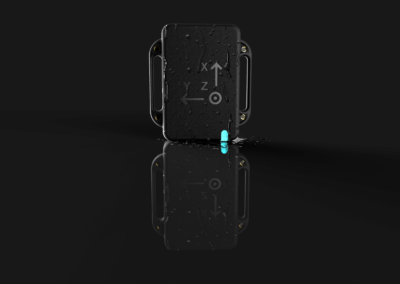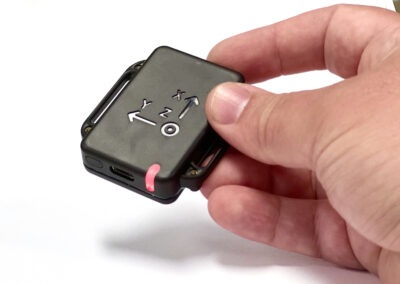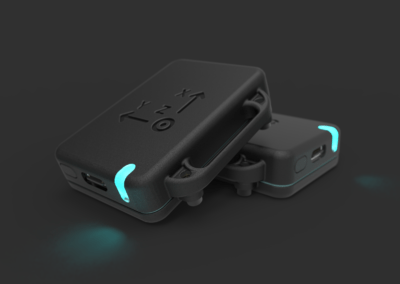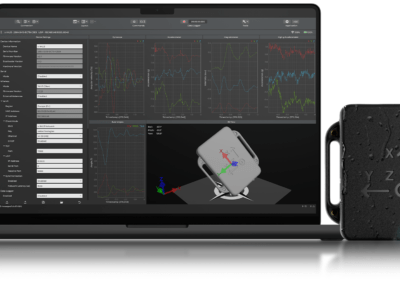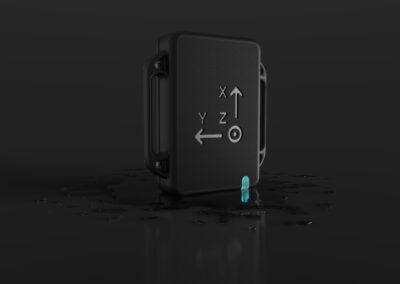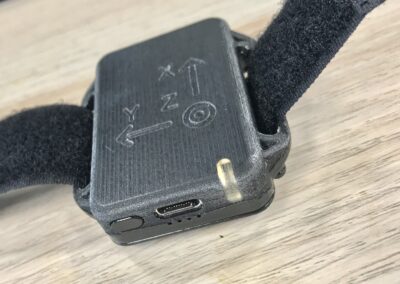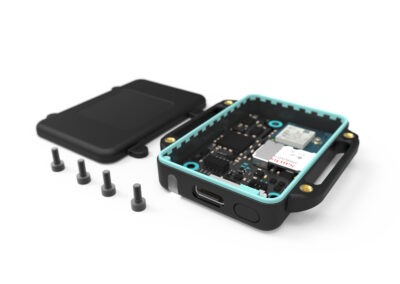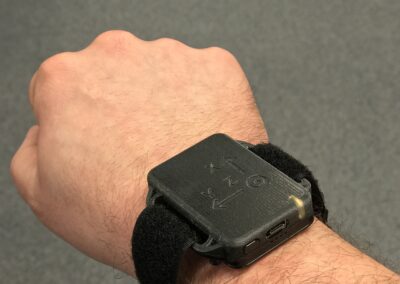XIMU3 Waterproof Inertial Measurement Unit (IMU) design
Our client needed a reliable, waterproof wearable solution to meet the needs of their most demanding users.
- Concept design
- Mechanical design
- IP67 ingress protection design
- Waterproof product design
- Industrial design
- Wearable technology design
- Design for manufacture
- Tooling
- Mechanical prototypes
- Multi-material 3D printed plastic/rubber prototypes
- Waterproof prototype testing
- Multi-shot plastic/rubber design
- Supplier introductions
- Supply chain management
By utilising in-house, multi-material 3D printing and extensive experience in designing watertight (IP67 rated) wearables and enclosures, we were able to design a prototype which exactly replicated the performance of the final product, reducing the development costs and tooling risk for our client.
Amongst this wearable’s many applications is measuring and logging motion for physical rehabilitation and sports performance. This Inertial Measurement Unit (IMU) device was designed to be worn on the body and used in settings where it may be abused, therefore it needed to withstand shocks and survive being fully immersed in water.
Following on from our client’s very successful NGIMU device, our client returned to us to develop their next generation wearable product, XIMU3. This smart, wearable, motion tracking device which has applications in sports performance and rehabilitation came with some new challenges. This time it needed to be tougher and more compact and also completely watertight and submersible up to 1m (IP67).
A small team of designers and engineers at Ignitec rapidly created a vision for the new wearable XIMU3 device and brought it to life with CAD models, 3D renderings and 3D printed prototypes. Using state of the art, in-house 3D printing technology our designers and engineers were able to rapidly iterate through designs using multiple materials in a single component, just like they would be in the final product. This allowed us to de-risk a lot of the sealing development for our client. Instead of waiting until the tooling stage to test the performance of seals, this could be done in a few hours and iterated multiple times until perfect, at a minimal cost. This approach allowed us to test and refine a design which included a transparent light guide and rubber seal which were all moulded into a single part, greatly reducing the chance of failure and leakage.
Once the wearable XIMU3 prototype design was perfect and delivered the desired performance, we were able to introduce our client to one of our specialist, multi-shot injection moulding partners and present them with a “golden sample” of what was required. Following a comprehensive handover, the devices are now in production.

